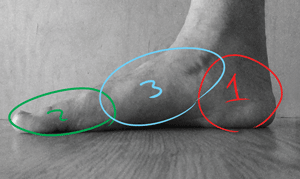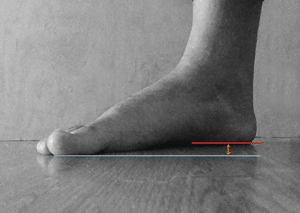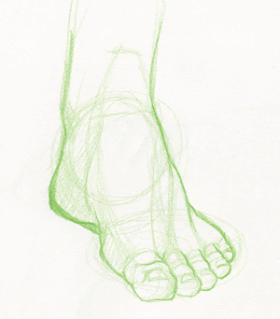Here is a simple shortcut used to start drawing the foot. It is helpful in positioning the foot and dealing with the problems of foreshortening.
Today, we are looking for ways to focus on one or two parts of the drawing process to make troubleshooting problems much easier. This technique has us simplifying the forms of the foot to focus on positioning and sizing it accurately prior to worrying about the contour of the form and the details of the anatomy.
Today, we are looking for ways to focus on one or two parts of the drawing process to make troubleshooting problems much easier. This technique has us simplifying the forms of the foot to focus on positioning and sizing it accurately prior to worrying about the contour of the form and the details of the anatomy.
Let's take a look. To see the rest of the post click on the read more link below.

Find the basic parts of the foot
This technique involves a bit of abstraction as we want to focus on the general positioning and sizing of the feet. First, we are going to divide the foot into three basic sections and draw all three as ovals.
The three sections are:
1. The heel.
2. The arch or bridge of the foot.
3. The ball of the foot with the toes.
Map the location of each part

We will draw these three general areas first as simple shapes to decide where they belong relative to each other. To do this, we draw each section as a circular or oval shape. These flat shapes allow us to focus on positioning the parts before shaping the forms.
One of the things we should look at is where the toes and ball of the foot are relative to the heel in the picture plane.
For example, if the foot is pointed towards the viewer the toes will be lower than the heel in the picture plane and vice versa when the heel is closer to the viewer.
For example, if the foot is pointed towards the viewer the toes will be lower than the heel in the picture plane and vice versa when the heel is closer to the viewer.
Once we have observed the position for each section of the foot, draw the shapes representing the general location of each.
When you draw these, work out the relative size of each of the three parts as you work out the location.
Notice that I am keeping the lines loose. This part of the drawing process is about the bigger parts, not the details. It is also about observing, evaluating, and making adjustments. Drawing loose lines is better as it allows us more freedom by avoiding locking in our drawing early and reminding us we should be adjusting the drawing when necessary.
Here is the same drawing with the shapes silhouetted, you can see a foot emerging from the three shapes.
Work out the forms
Once we are happy with the general positioning and sizing of the shapes we can start to refine them by including the smaller shapes. In the image to the right, I have added the toes and ankles as simple shapes.
As a side note, keep the lines light to avoid these lines showing up in the drawing later. I went over them with a bolder line so that we can see them for the demo.
Contour and Anatomical info
Now we are ready for work on the contour, anatomy, and add the details of the foot.
Using the general shapes already drawn, we can start to reshape each form by observing the contours of the surface and examining the anatomy of each foot as seen from our view.
If everything is done right, we don't have to adjust size or location and can focus on the smaller details now.
Try this out. Practice drawing the foot in different positions relative to the viewer. It is helpful if you can get someone to pose his foot for you in different positions.
If you can convince someone to do this for you, have them pose their foot in one direction for a few minutes at a time. Then you draw just the three basic shapes representing the foot (no details, just general shape) practicing capturing the accurate size and position relationships.
Enjoy drawing.
If you can convince someone to do this for you, have them pose their foot in one direction for a few minutes at a time. Then you draw just the three basic shapes representing the foot (no details, just general shape) practicing capturing the accurate size and position relationships.
Enjoy drawing.






